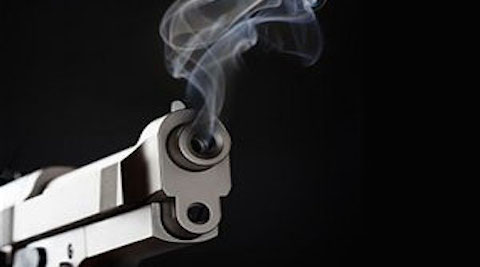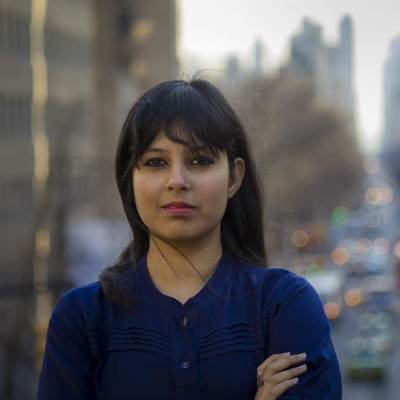Opinion Celebratory firing kills more, but there is no noise over these gunshots
Possessing a gun symbolizes infinite power. In small towns, which are heavily patriarchal, it's the men belonging to upper castes who possess and brandish guns frivolously.

 Universally, masculinity has been inextricably linked to the ownership of guns. There is a reason why guns are designed as phallic symbols. (Representational Image)
Universally, masculinity has been inextricably linked to the ownership of guns. There is a reason why guns are designed as phallic symbols. (Representational Image)
In certain parts of India, particularly in villages and small towns, social gatherings like marriages are attended by people who often carry guns. Last Friday, Kamal Chauhan, a manager at a gas agency in Bilarai, accidentally killed a 20-year-old student in a celebratory firing, using a .32 caliber revolver at the student’s sister’s wedding in Rampur. Yesterday, Chauhan committed suicide. Last week in Maur, an hour’s drive from Bathinda, a 25-year-old dancer, Kulwinder Kaur was shot in the head by a man carrying a 12-bore double barrel gun, while she was performing at a wedding. Her husband informed the press that she was three-months pregnant. In July 2016, a celebratory firing at a wedding led to a waiter losing his life.
Possessing a gun symbolizes infinite power. In small towns, which are heavily patriarchal, it’s the men belonging to upper castes who possess and brandish guns frivolously. Gun culture though, is intrinsic to our system – an affinity for guns is ingrained in us since childhood, particularly during celebrations. Consider Indian festivals, where Holi is celebrated with children scurrying about with pichcaris (the modern ones look like coloured, plastic guns) in tow, while during Diwali, children play with toy guns with pathaka pellets.
Universally, masculinity has been inextricably linked to the ownership of guns. There is a reason why guns are designed as phallic symbols. Psychologists say that the desire to own guns, stems from a lack of confidence in men, which is veiled by this reasoning: carrying a gun is a ‘masculine duty’. It therefore makes men feel more empowered – in authority, in control. In certain parts of India, firing bullets in the air during weddings is culturally accepted. No one questions it. But firing guns is an attention-seeking schtick – an attempt to stand out in the midst of a chaotic crowd that chooses more uneventful ways of celebrating: the loud beating of drums, the rhythmic stamping of feet and dizzying dance movements by the inebriated. In addition, it’s usually the upper caste (the economically privileged) in small towns, who tend to own guns. Firing guns at weddings therefore, announces their social standing in society.
How easy is it to get a license for guns? According to government of India’s official police website, an arms license seeker can fill out an application (Form A) provided on its website and submit it to the District Police office with a court fees stamp of five rupees. A copy of a ration card, along with a 3-year statement of Income Tax Returns and two character certificates from “responsible citizens from your locality”, are few of the documents which are required. India apparently has stringent gun ownership laws in place. The government issues licenses under three sections: crop protection, self-defense and sports. According to the new rules introduced recently, while purchasing a gun, the owner must also exhibit a level of gun-training. Owning guns legally takes weeks, even months. Many therefore, sought guns illegally.
In 2014, India’s National Crime Records Bureau stated that 3,655 gun-related deaths had occurred. However, only 14 percent of these deaths were attributed to licensed guns. The rest of them were killed by guns which were illegally owned. According to NCRB in 2015, 85 percent of firearm reported crimes occurred with unlicensed weapons.
Illegally, guns are easily available in the market. According to Economic Times, AK 47s and AK56s are readily available in Karol Bagh’s Gaffar Market in New Delhi. In Punjab, Rajasthan, Nagaland, and Bihar, locally made firearms such as kattas and tamanchas are illegally available and sold in the market. Illicit gun manufacturing units are peppered across the country, where local, hand-made pistols can be bought at a price as low as Rs. 1,500.
In 2015, Economic Times reported the existence of over 25,000 guns illegally owned and seized across 12 districts in western Uttar Pradesh. “While Ghaziabad, on Delhi’s outskirts, topped the charts with 2,716 and the most deaths (581), Meerut came a close second with 2,415. In terms of illegal manufacturing units busted, Etah reported the most with 18, followed by Ghaziabad (17) and Shamli (16),” it reported.
While owning guns legally involves having political connections that run deep, buying firearms illegally, involving no paperwork at all is reasonably easy. The problem of gun violence however, is rampant and an escalating concern. Weddings are meant to be celebratory. The idea of having guns punctuating the ambiance seems deeply disconcerting. Unfortunately, in India and other countries Pakistan and Afghanistan, firing at weddings are culturally accepted. However, weddings often take a macabre-esque tone when accepted, reckless gun firing leads to injuries or deaths.






